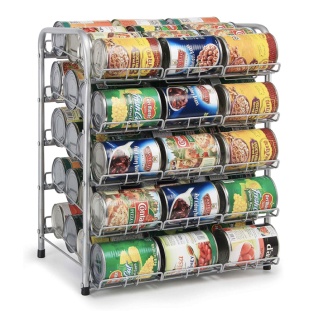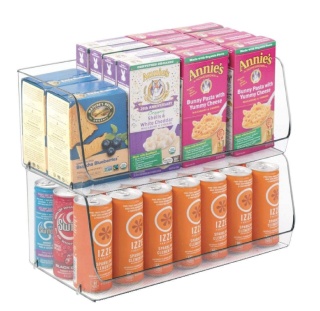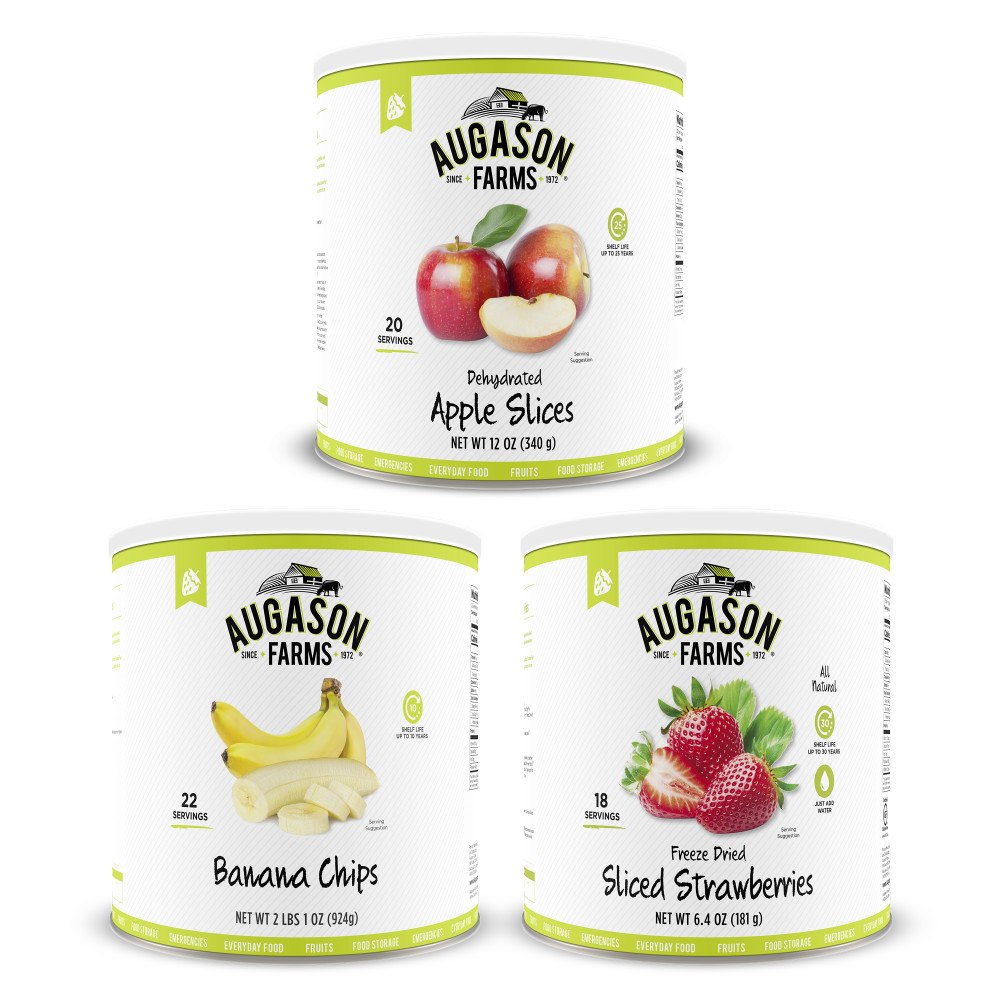Essentials:
Food
We all need sustenance to survive. In fact, the average person requires around 800,000 calories per year, and a well-balanced variety to remain healthy. It can be extremely overwhelming to meal prep for just a couple of weeks, let alone for an entire year! When it comes to essential foods however, it really just comes down to preference and longevity. Depending on your specific preparedness goals, there are literally countless short- and long-term pre-packaged options, preservation techniques, storage options and food prep ideas to consider. Rather than adding to your overwhelm and giving you more options to choose from, we’re going to focus on the true “essentials” as you begin to expand your pantry.
there is just no getting around it
For starters, there are just a few very important considerations to always keep in mind:
1. Never Stock Up On Food You Do Not Normally Eat.

If you don’t eat spam, then don’t buy it! The easiest and most cost effective way to stock up a couple weeks of extra food is to simply expand upon those non-perishable foods you already consume on a regular basis. Whether it’s those cans of vegetables, tuna or beans, or boxes of pasta, rice or dried potatoes, as it can be afforded just pick up a couple extra each time they’re on sale at the grocery. Before you know it you’ll be 2-3 deep on everything, or however deep you need to be to account for the size of your family.
3. store foods in appropriate environments.

Foods can spoil much faster if stored in areas with direct sunlight, or anywhere heat can be an issue such as attics, garages or near appliances. Optimal food conditions are cool, dark and dry places, ideally between 50-65 degrees fahrenheit.
Food & Storage
You can rest assured that any products or services we’ve recommended here have been put through some rigorous testing by multiple individuals, myself included. With these considerations in mind, we’ve found it easiest to break our food and storage into three categories:
1. Emergency
Emergency foods like MRE’s, meal replacement or high calorie food ration bars and freeze-dried single meal pouches (Mountain House, Peak Refuel, Backpackers Pantry, etc.) are great to have on hand mainly for “grab-and-go” purposes. When faced with an emergency situation requiring you to leave your home quickly, having lightweight, easily packable foods can be a lifesaver. While these don’t typically have the longest shelf-life, they can be easily rotated along with other pantry items and used during camping, backpacking, road trip or other travel-related situations.

Backpackers Pantry Three Cheese Mac & Cheese
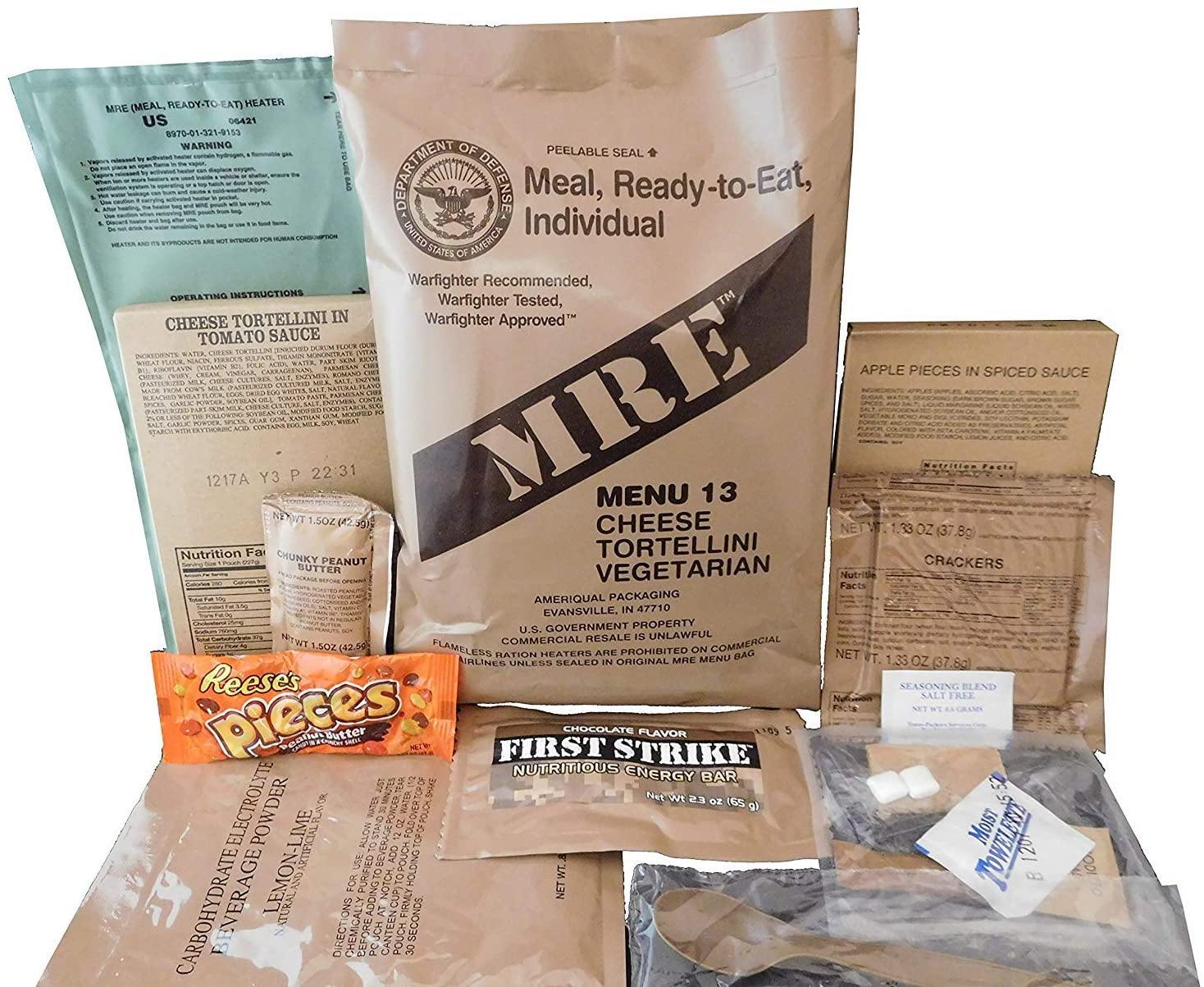
MREs Assorted Flavor
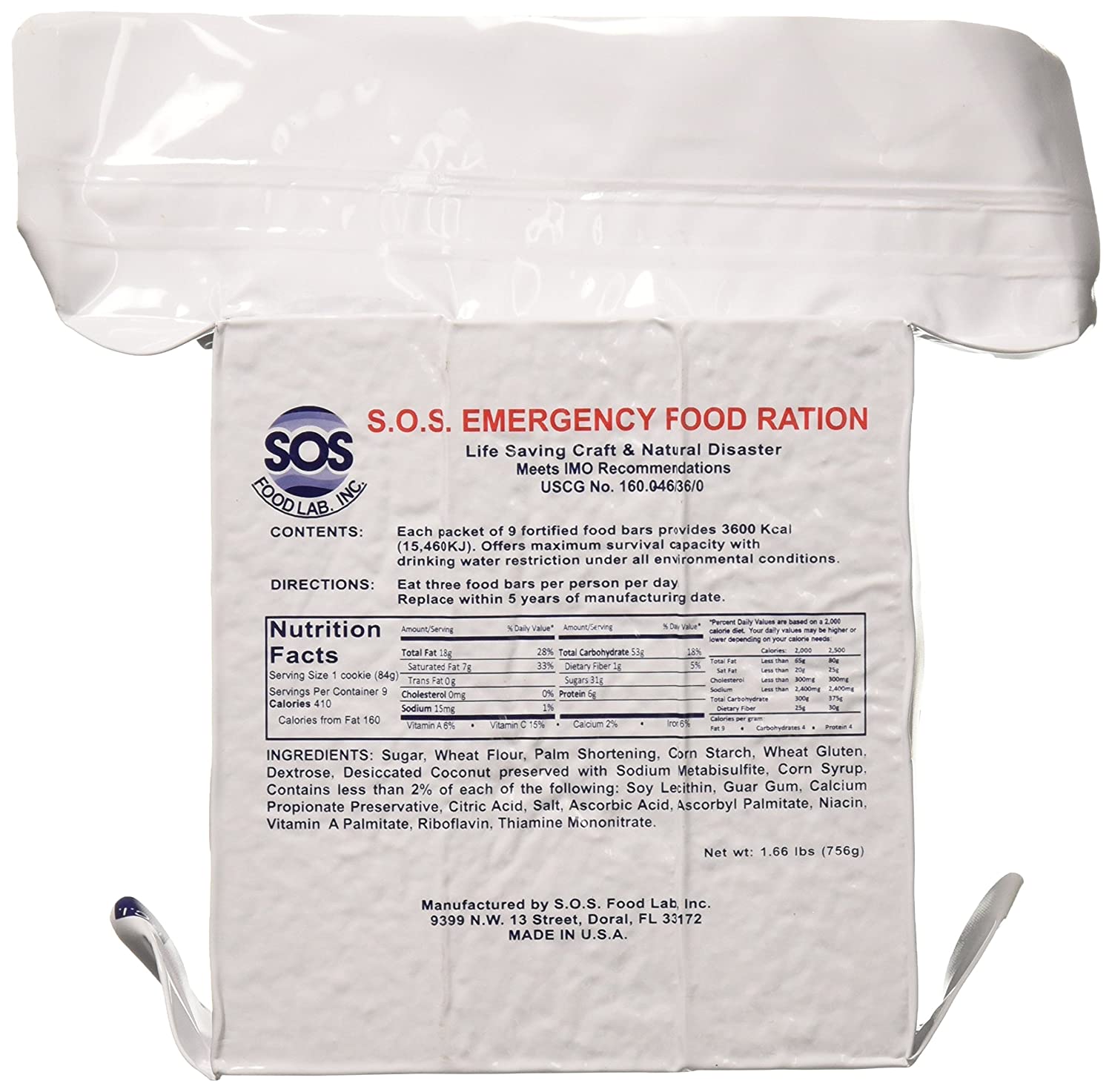
S.0.S. Emergency 3600 Calorie Food Bars
2. Short Term
Short-term foods basically consist of everything you eat (and rotate) on a regular basis. The more non-perishables you have here, the better off you’ll be when it comes to long-term flexibility. The downside to that however, is that fresh foods often have much more nutritional value, so be sure to balance this to keep your body in optimal health.
There’s no one size fits all solution for short-term foods, your only goal here rather is to just stock up on whatever you may already have in your pantry, plus a few extra “easy meals” as we like to call them – prepackaged meals that take less than 20 min to prepare and can feed an entire family. While these aren’t exactly healthy by any means, they can easily sustain you for a few days while you’re deciding how best to move forward during a potential emergency. As for the others, 2-3 of each item will typically give you between two weeks to a month of extra food on hand. This is highly contingent on how much or little food you would normally have stocked of course.
Other items you may consider stocking a little extra of are toiletries and household goods like toothpaste, toilet paper, sanitizers, soaps and shampoo/conditioner, vinegars and any other items you typically purchase from a grocery store. And don’t forget about your pets as well – they’ll need some extra food too!
You may be wondering why it’s important to stock your short-term foods in addition to long-term options as well. In simple terms, emergencies come in all shapes and sizes, and may last anywhere from hours to months. A well-stocked pantry can give you lots of breathing room to continue your life in more/less a normal manner when faced with a localized or smaller scale disaster. It eliminates the need to fight the hoards on a last minute rush to the grocery only to find what you’re looking for is already gone. The sense of calm reassurance this will all bring is almost impossible to express until you’re faced with a scenario where you realize how grateful you are to your past self for being responsible enough to prepare. While we sincerely hope there are no catastrophic disasters in any of our futures, they’re inevitable on a smaller scale at the very least.
3. Long Term
There’s a lot to consider when it comes to long-term food storage, but we’re just going to focus on the essentials for now. Stages 2 and 3 of our Comprehensive Guide to Everyday Preparedness can help you dive much deeper into a self-reliant lifestyle and the role long-term food storage plays within. As far as the basics though, here’s the scoop on the three main topics that need to be considered:
While freeze-dried foods from companies like Legacy Food Storage, Augason Farms, Emergency Essentials, MyPatriotSupply and ReadyWise make it super convenient to stock up, they also top the list when it comes to cost. If you can afford it however, most of these have a 25 year shelf life and come in pre-packaged meals so it’s as easy as adding water and heating in most cases. They also provide a wide variety of foods with many of their kits, which will be a welcome comfort in times of distress. No one wants to eat the same thing day in and day out!
For those of us who may be looking to maximize our dollars, making your own long-term foods isn’t all that complicated with the right materials and a little hard work. You can store almost anything in 5-Gallon BPA-free plastic buckets using mylar bags, oxygen absorbers and/or desiccants.
Canning foods is also a very practical way to increase your food storage, especially if you grow your own food. The All American pressure cooker is pretty much the gold standard if you’re in the market. In urban environments, growing enough food to eat throughout the summer and still have more to preserve might be a challenge with limited space, but it can be done. There are a number of books out there that can help walk you through the necessary steps to setting up a solid “microfarm” within a suburban plot of land (see below) (The Suburban Micro-Farm: Modern Solutions for Busy People, The Backyard Homestead: Produce all the food you need on just a quarter acre! , Gaia’s Garden: A Guide to Home-Scale Permaculture, 2nd Edition).
Food dehydrators, like the tried and true Excalibur Electric Food Dehydrator can save you lots of money in the long run as well. It’s capable of dehydrating full meals just like you’d find in the freeze dried kits above, as well as anything and everything your heart desires. Fruits and veggies, slow-dehydrated, are especially good as they maintain their nutrients and can be sealed in mylar bags to significantly prolong their life.
Vacuum sealers are another great addition to your preps to help prolong the life of meats and veggies stored in your freezer. Check out the latest and greatest options here.
Whatever method you may choose, take it slow if you’re just starting out. Just remember to keep the focus on nutrition density – you need calories to survive. Proteins and fats are always better for long-term sustenance over carbs and sugars, which is why they typically cost a lot more. If you haven’t tried any freeze-dried foods from the major brands above, we recommend doing a taste test of several before committing to a larger order. And keep in mind, we’re here to help! Simply ask us a question if you’re thinking about taking the next step – we’ll give you an honest opinion based on our collective experience!
This is an often overlooked aspect when it comes to food storage in general. We all rely heavily on appliances and electric, but be sure to have multiple backup options in the event of a widespread outage. Even gas/propane options will only be available until they’re depleted, so have a plan for what happens next. Solar ovens and kettles, smokers and portable grills are all great options with plentiful fuel sources, even in emergency situations. Learning the basics of fire-making, among many other essential skills, will only make you more prepared should the time come to use them, even if it’s just your next camping trip 😉
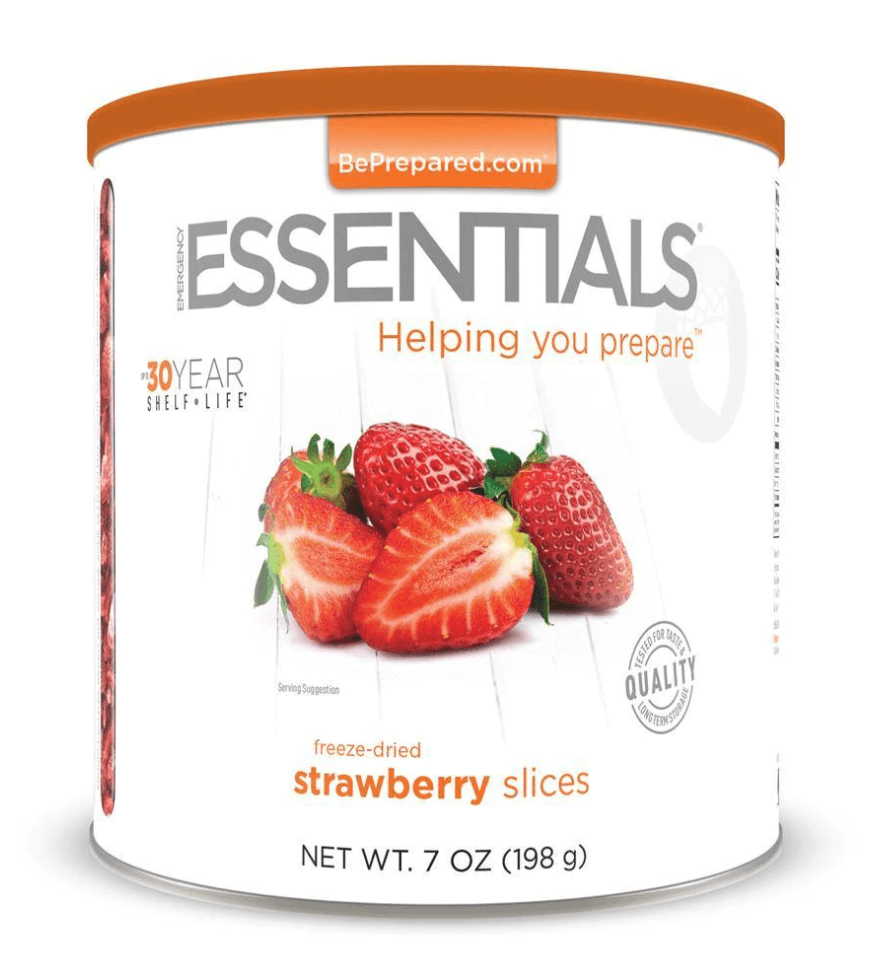
Emergency Essentials Mega Fruit Kit
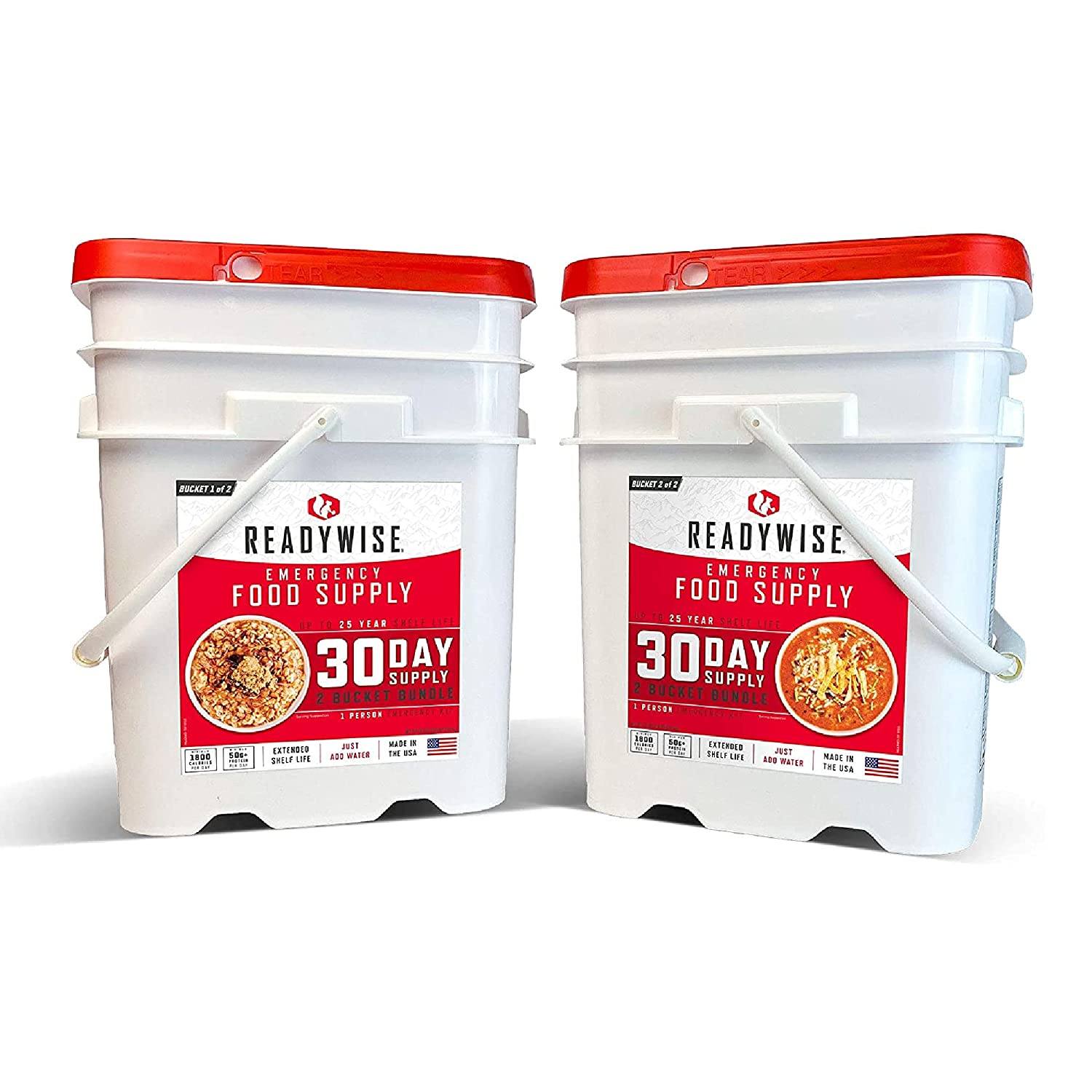
ReadyWise 30-Day Food Supply
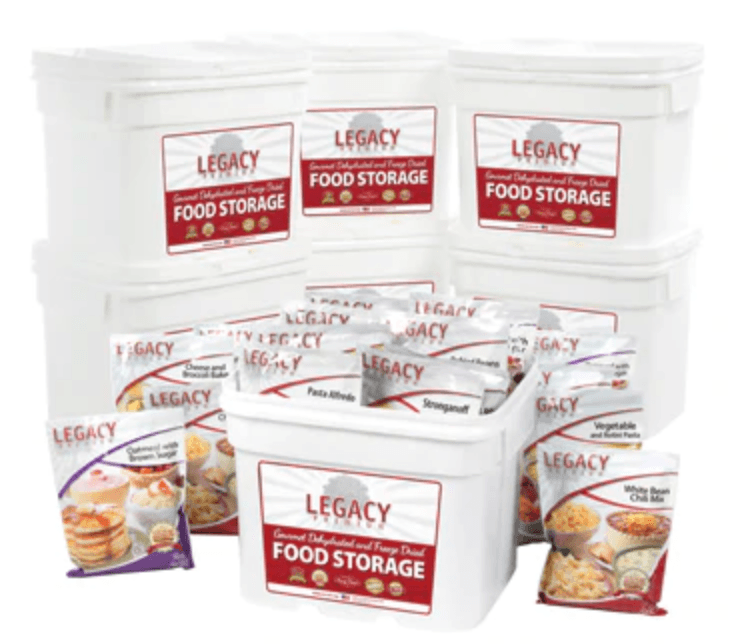
Legacy Food Storage Emergency Food

Mylar Bags for Food Storage
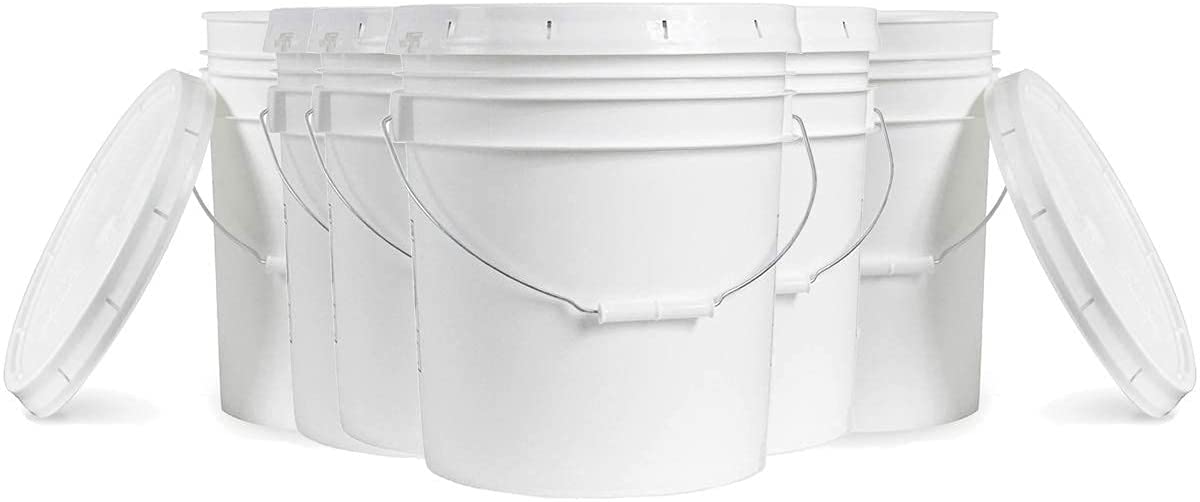
5-Gallon BPA-Free Plastic Buckets

UCO Grilliput Portable Camping Grill
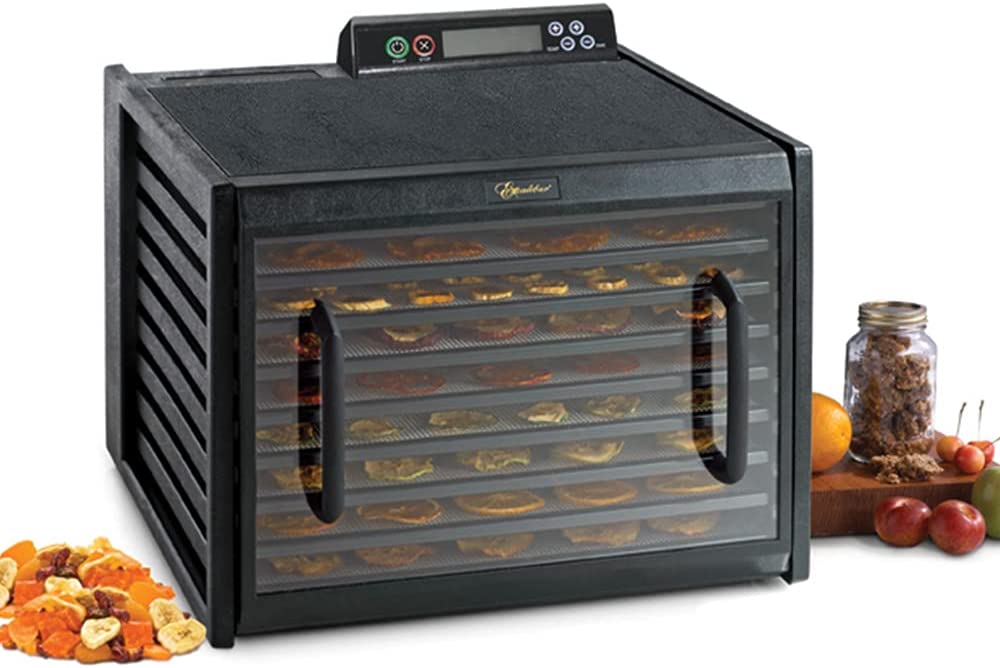
Excalibur Electric Food Dehydrator

All American 10.5 QT Pressure Cooker



